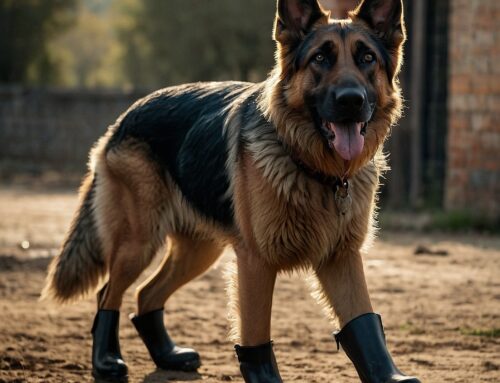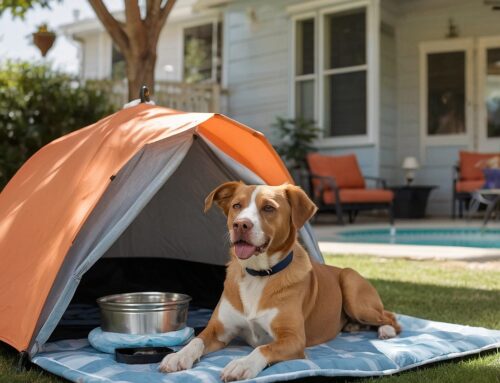One of pet owners’ biggest fears — a very legitimate one — is that their dog or cat will become lost and not be able to find its way home. This is a realistic fear; every year approximately 10 million pets go missing in the U.S., and millions of these animals sadly end up in animal shelters. Without technological devices, only 15% of dogs and just 2% of cats are reunited with their owners.
Why and How Dogs Get Away
One of the biggest triggers for dogs running away and/or getting lost is fear. Dogs will often respond with a fight-or-flight response to loud noises; fireworks, thunderstorms, gunfire and even large crowds can scare them.
But for many dogs, running away can also be a sign of separation anxiety related to being away from their owners for lengths of time (just a few hours, in some cases). Dogs may choose to run away if there are other people or animals nearby that could make them feel a bit better or more secure. Food, toys and other temptations can play a part in this.
Another reason why dogs run away is irrepressible mating instincts if they are not neutered or spayed. Starting at the age of six months, both male and female dogs have extremely strong hormonal urges to reproduce. So, it’s important that pets get neutered and spayed.
Some other reasons why dogs run away are hunting instincts, boredom and unfamiliar surroundings. Certain breeds of dogs are naturally inclined toward hunting (or at least following scents of other animals), such as Beagles, Terriers, or American Foxhounds. Hunting is a natural behavior that releases adrenaline and produces canine hormones associated with satisfaction.
Some dog breeds — particularly smart ones — run away out of boredom. Dogs are naturally curious animals that have a need for daily activity and stimulation. If a dog is not receiving enough exercise and/or entertainment, they may desire to go out and seek these on its own.
If a dog is in a place it doesn’t know — for instance, on a vacation — the chances increase that he or she will run away, especially if there are intriguing new smells or distractions around. Dogs have a natural tendency to explore and can easily get lost doing so.
Steps You Can Take
Fortunately, there are several common-sense measures you can take to prevent your dog from running away and/or getting lost:
If your dog is mostly an indoor dog, be sure that all doors and windows are secure. If you have kids, make sure they don’t leave windows or doors open. Even with outdoor dogs, gates, entrances and other access points to private properties should be closed securely. Be sure to remind any visitors or guests that you have pets that are prone to escaping. Tall fences should be installed around yards, gardens and other areas where dogs are allowed to roam.
Also be aware if your dog is digging underneath the fence line so that can be addressed and fixed.
Be especially careful when opening doors if dogs are close by, so they don’t bolt between or around your legs. In some cases, this can be a training issue, and in these instances, a dog trainer can help mitigate this.
When taking dogs for a walk, make sure they’re on a leash and secure collar unless they’re in an enclosed area, such as a dog run. And have a good grip on the leash in case your dog encounters unexpected stimuli like an oncoming car, a loud noise or another dog that might be threatening or appealing to run after.
Technology to the Rescue
In addition to the common-sense steps outlined above, there are technological tools and aids that can help owners keep track of their pets.
Most of these devices use a compact transmitter that’s made to fit into or even replace a dog’s collar. Many of these use common wireless standards such as Bluetooth, WiFi or GPS to send signals to transmit their location to a base station, a smartphone or the Internet; but some of these trackers use their own proprietary signals that aren’t compatible with any of the more usual standards.
While it may be tempting to use generic tracking devices, remember that these likely won’t hold up to all the wear and tear your dog can put them through (for instance, coming into contact with mud or water).
A few other considerations to take into account are battery life and subscription costs. Batteries in trackers must be replaced from time to time, and many of these devices only work with subscription-based apps. So do research battery life and those subscription costs.
Some devices go beyond just helping you locate your pet by serving as fitness trackers similar to those used by humans. Some advanced trackers, generate fitness reports for your dog, showing movement levels from resting to vigorous activity, in addition to recording pulse and respiration rates. Do research devices that offer a web-based interface that veterinarians can easily access, so they can assess this information when examining your dog.
Microchipping
Note that all of these tracking solutions are in addition to microchips that can be placed permanently by a vet under your dog’s skin. Most vets charge less than $50 to inject a chip that’s the size of a grain of rice (about 12 mm in length) into your dog for identification purposes. Note these chips don’t have batteries, and they must be brought close to a scanning device to function (about 95% of vets and animal shelters have the appropriate scanners). These scanners bring up an ID number, and this number is referenced in a database, which contains a dog’s name, optional photos, a description and owner information.
Even if you use one of the tracking solutions outlined above, you should always get your dog chipped as a loss and safety precaution. Find a provider that offers a nationwide toll-free number for pet owners to call if their dog or cat is lost. Once the call is made, these top providers will send an alert to animal shelters, veterinary offices and dozens of local volunteers within a particular radius of the location where their pet was last seen. When someone finds the missing animal, often one of the first things they’ll do is take it to a shelter or vet, where the pet is scanned, and the provider is contacted. Pets and their pet parents are then reunited.
Volunteer Communities That Help with Lost Pets
From social media to more, there are a number of networks of volunteers helping in the efforts of lost pets. When the number of eyes and ears multiply in a community, the chances of finding a lost pet increases.
While missing pets are a real and widespread problem, there are a variety of technology-based solutions that can help owners reunite with their lost animals.








